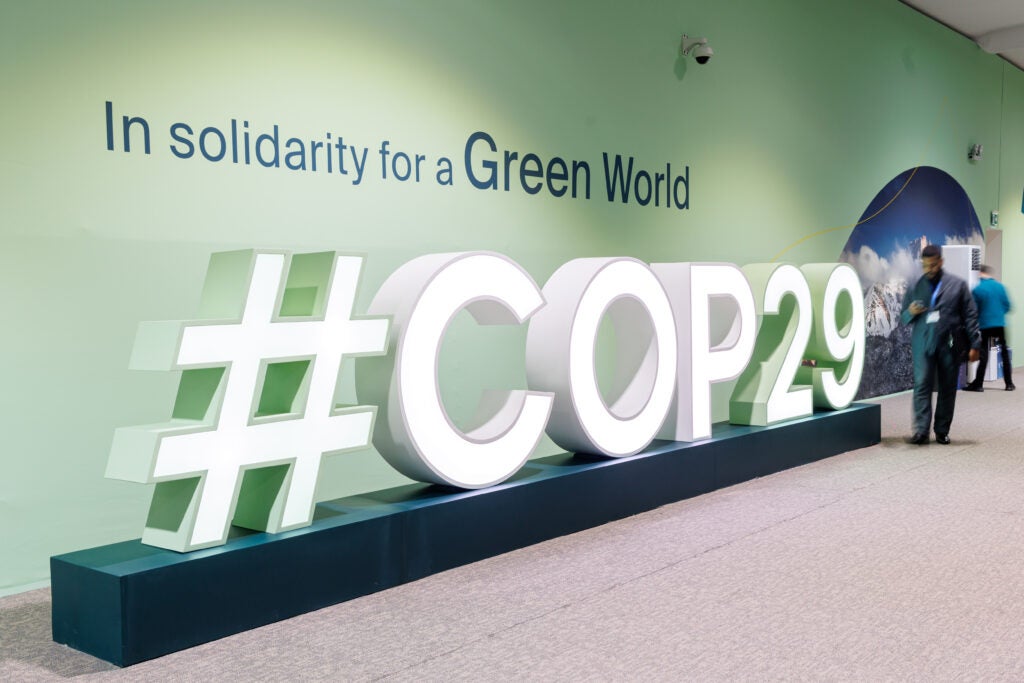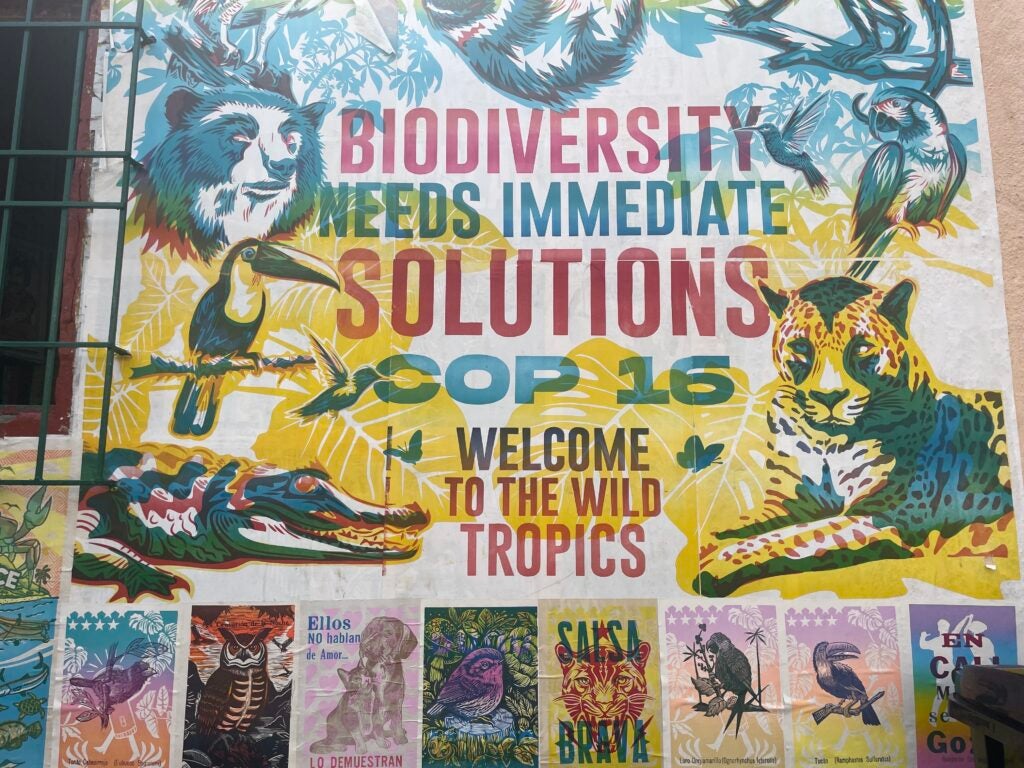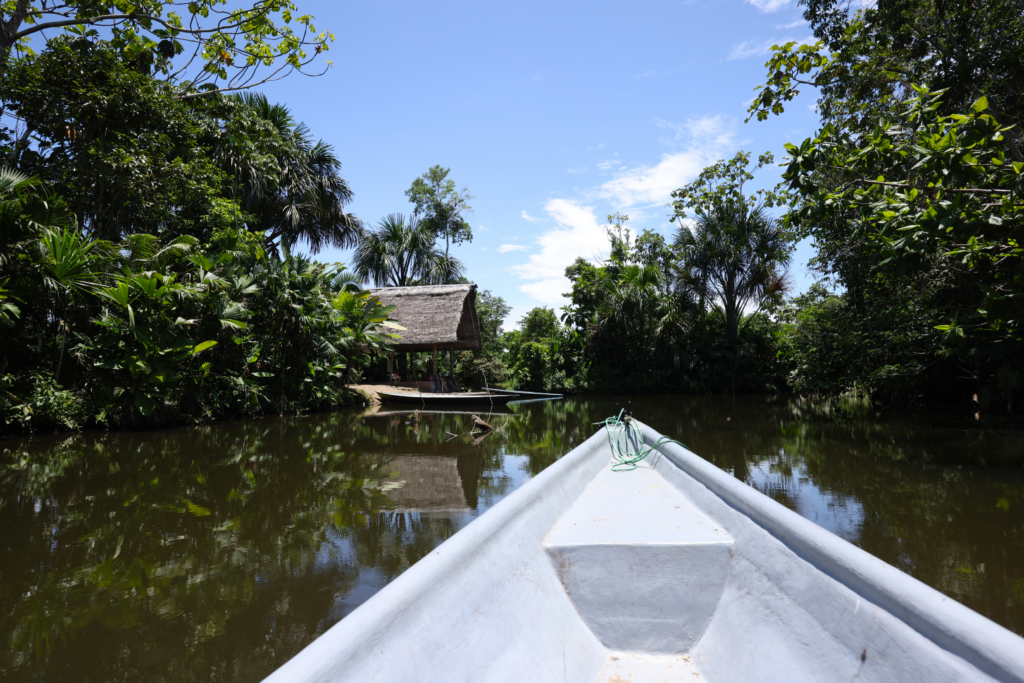
COP29 sign in Baku. Photo by UNclimatechange via Flickr
Today, November 14, is Finance Day at COP29. We caught up with Leslie Labruto, EDF’s Managing Director for Sustainable Finance, about what she’s watching for at COP29, the United Nations’ climate change talks in Baku, Azerbaijan. Follow Leslie on LinkedIn.
Q: You’re in Baku for COP29. What key issues are on your radar?
A: The spotlight here this year is on scaling up climate finance for developing countries, and a need for redoubled global cooperation to achieve our shared climate goals. My team and I, along with the rest of the +Business team at EDF, are laser focused on working with the private sector to ensure climate and nature wins. A major focus at COP will be the establishment of a climate finance goal, called the New Collective Quantified Goal (NCQG), which will replace the $100 billion annual commitment that high-income countries pledged to deliver under the Paris Agreement. The NCQG could reach at least $1 trillion a year—a figure that better aligns with the financial gap that needs to be closed to address the climate crisis.
Developing countries need these funds to tackle climate change, transition to clean energy, and adapt to the impacts of climate change, and it’s crucial that the finance be provided in a way that’s just, equitable, and effective. Let’s not forget that those ‘wins’ in developing countries are good for everyone everywhere, since climate impacts are felt globally. Successful climate finance means more forests still standing, a larger climate workforce, more resilient food systems, more methane abated, and greater global renewable energy capacity. Because climate-related investments are needed to meet global goals and address inequitable impacts from past emissions, low-income borrowers should have access to concessional finance. The NCQG will not only scale up ambition but also support countries as they prepare to submit their updated climate commitments in 2025.
Q: You’ve emphasized both the quantity and quality of climate finance. What do you mean by “quality”?
A: While the amount of climate finance is essential, its effectiveness — its quality — is equally important. When we talk about quality, we mean ensuring that climate finance is structured to be concessional, accessible, and impactful. In the private sector, finance is tracked with metrics like profits and losses that communicate shareholder value. In climate finance, however, there is less accountability in terms of impact metrics.
Climate finance should leverage public and private investment to make rapid progress toward net zero emissions and benefit local communities. To make sure financing achieves this, we need a system that is accountable for being easy to access, impactful in tackling climate-related challenges, and affordable for borrowers.













